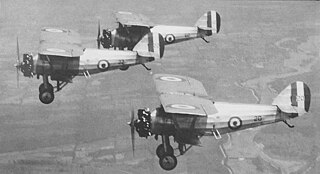 W
WThe Armstrong Whitworth Siskin was a British biplane single-seat fighter aircraft of the 1920s produced by Armstrong Whitworth Aircraft. The Siskin was one of the first new RAF fighters to enter service after the First World War, and was noted for its aerobatic qualities.
 W
WThe Armstrong Whitworth A.W.14 Starling was a British single-engine biplane fighter developed for the Royal Air Force in the 1920s. The plane was an unsuccessful model, with the Bristol Bulldog being selected instead.
 W
WThe Avro 566 Avenger was a prototype British fighter of the 1920s, designed and built by Avro. It was a single-seat, single-engine biplane of wood and fabric construction. Although it was a streamlined and advanced design, it never entered production.
 W
WThe Avro Type 584 Avocet was a British single-engined naval fighter prototype, designed and built by Avro. While the Avocet was not built in numbers, one of the prototypes was used as a seaplane trainer for the Royal Air Force's (RAF) High Speed Flight.
 W
WThe Beardmore W.B.XXVI (W.B.26) was a prototype British two-seat fighter of the 1920s. A single engined biplane, one example was built and evaluated by Latvia, but was not accepted for service.
 W
WThe Blackburn F.2 Lincock was a British single-seat lightweight fighter produced by Blackburn Aircraft Limited.
 W
WThe Blackburn 2F.1 Nautilus was a British single-engine two-seat biplane spotter/fighter built in 1929. Only one was completed.
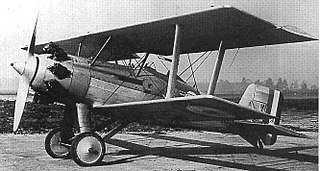 W
WThe Boulton & Paul P.33 Partridge was a single seat single-engined biplane fighter designed to an Air Ministry specification. One prototype was ordered and built for trials in 1928, but it was not put into production.
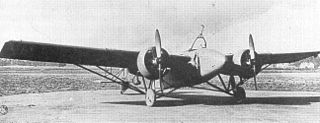 W
WThe Boulton Paul Bittern was a 1920s British night-fighter aircraft built by Boulton Paul Limited of Norwich, named after the marsh bird of the same name.
 W
WThe Bristol Bagshot, also known as the Type 95, was a prototype heavily armed British fighter built by the Bristol Aeroplane Company and first flown in 1927. Flight testing revealed serious problems, and the project was abandoned.
 W
WThe Bristol Bulldog was a British Royal Air Force single-seat biplane fighter designed during the 1920s by the Bristol Aeroplane Company. More than 400 Bulldogs were produced for the RAF and overseas customers, and it was one of the most famous aircraft used by the RAF during the inter-war period.
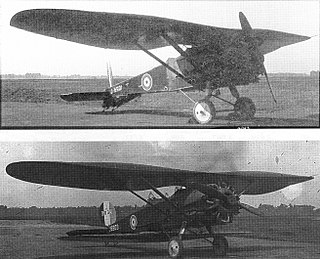 W
WThe Bristol Bullfinch was an experimental British military aircraft first flown in 1922. Variants were built as both parasol wing monoplanes and biplanes, but both versions proved unsuccessful, and only the three prototypes were built.
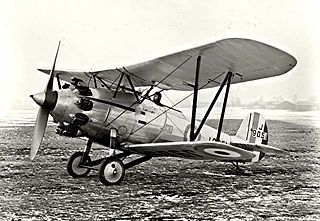 W
WThe Bristol Type 107 Bullpup was a British fighter aircraft built in the 1920s. It was not selected for squadron service and only the single prototype was built
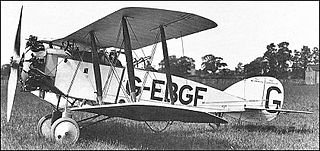 W
WThe Bristol Type 76 Jupiter Fighter and Type 89 Trainer were derivatives of the British fighter of the First World War, powered by Bristol Jupiter radial engines. While unsuccessful as a fighter, it was used as an advanced trainer aircraft between 1924 and 1933.
 W
WThe Bristol Bloodhound was a British two-seat reconnaissance/fighter aircraft designed and built by the Bristol Aeroplane Company as a possible replacement for the Bristol F.2 Fighter for the Royal Air Force. It was unsuccessful, only four prototypes being built.
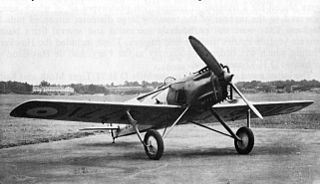 W
WThe de Havilland DH.77 was a prototype British fighter aircraft of the late 1920s. Intended as a fast climbing interceptor for Britain's Royal Air Force, the DH.77 was a lightweight low-wing monoplane powered by a relatively low power engine. Despite excellent performance, only one aircraft was built, the Hawker Fury biplane being preferred.
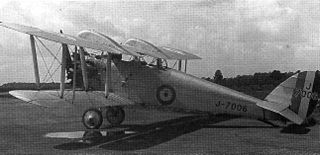 W
WThe de Havilland DH.42 Dormouse and its two variants the de Havilland Dingo I and II were two-seat single-engined biplanes designed for fighter-reconnaissance and army cooperation roles. They did not achieve production.
 W
WThe de Havilland DH.42 Dormouse and its two variants the de Havilland Dingo I and II were two-seat single-engined biplanes designed for fighter-reconnaissance and army cooperation roles. They did not achieve production.
 W
WThe de Havilland DH.42 Dormouse and its two variants the de Havilland Dingo I and II were two-seat single-engined biplanes designed for fighter-reconnaissance and army cooperation roles. They did not achieve production.
 W
WThe Fairey Firefly IIM was a British fighter of the 1930s. It was a single-seat, single-engine biplane of all-metal construction. Built by Fairey Aviation Company Limited, it served principally with the Belgian Air Force throughout the 1930s until the outbreak of World War II.
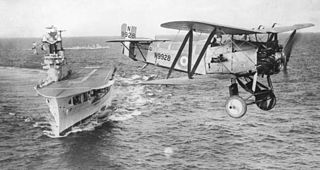 W
WThe Fairey Flycatcher was a British single-seat biplane carrier-borne fighter aircraft made by Fairey Aviation Company which served from 1923 to 1934. It was produced with a conventional undercarriage for carrier use, although this could be exchanged for floats for catapult use aboard capital ships.
 W
WThe Fairey Pintail was a British single-engine floatplane fighter of the 1920s. While it was developed by Fairey as a reconnaissance fighter for the Royal Air Force, the only orders placed were for three for the Imperial Japanese Navy.
 W
WThe Gloster Gamecock was a biplane fighter of the Royal Air Force, a development of the Mk III Grebe, that first flew in February 1925. It differed from the Grebe primarily by way of its Bristol Jupiter engine, which replaced the unreliable Armstrong Siddeley Jaguar. Other changes included improved ailerons, refined fuselage contours, and internally mounted machine guns.
 W
WThe Gloster SS.35 Gnatsnapper was a British naval biplane fighter design of the late 1920s. Two prototypes were built but the type did not enter production.
 W
WThe Gloster Goldfinch was a single-engined single-seat high-altitude biplane fighter of all-metal construction from the later 1920s. It did not reach production and only one was built.
 W
WThe Gloster Gorcock was a single-engined single-seat biplane fighter aircraft produced to a United Kingdom Air Ministry contract completed in 1927. Only three were built.
 W
WThe Gloster Grebe was developed by the Gloster Aircraft Company from the Gloster Grouse, and was the Royal Air Force's first post-First World War fighter aircraft, entering service in 1923.
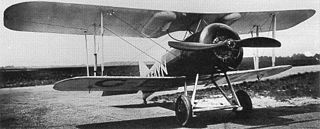 W
WThe Gloster Grouse was a British biplane of the 1920s developed by the Gloster Aircraft Company. Often referred to as the prototype to the Gloster Grebe, the Grouse originally built as an experimental aircraft and then later developed as a trainer. Despite its compact design and maneuverability, the Grouse was not in itself a commercial success, although it formed the basis for the Gloster Grebe and Gamecock fighters which were used by Britain's Royal Air Force into the 1930s.
 W
WThe Gloster Guan was a single-engined single-seat experimental biplane fighter built in the United Kingdom to test the performance of fighters using supercharged engines at high altitudes. Three were planned but only two constructed.
 W
WThe Nightjar was a British carrier-based fighter aircraft of the early 1920s. It was a modification of the earlier Nieuport Nighthawk fighter produced by Gloster after the Nieuport & General company, which designed the Nighthawk, closed down. Twenty-two were converted, serving with the British Royal Air Force from 1922 to 1924.
 W
WThe Gloster Sparrowhawk was a British single-seat fighter aircraft of the early 1920s. A development by Gloster Aircraft Company of the earlier Nieuport Nighthawk fighter, 50 aircraft were built by Gloster for the Imperial Japanese Navy, with a further 40 being assembled in Japan, being operated from 1921 to 1928.
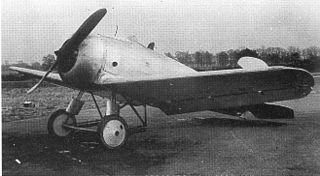 W
WThe Handley Page Type S, or HPS-1 was a prototype British carrier-based fighter developed for the United States Navy in the early 1920s. A low-wing monoplane, it was unsuccessful, only two being built and flown.
 W
WThe Hawker Danecock biplane was developed from the Hawker Woodcock for the Danish air force and naval service.
 W
WThe Hawker Hawfinch was a British single-engined biplane fighter of the 1920s. It was unsuccessful, with the Bristol Bulldog being selected instead.
 W
WThe Hawker Heron was the first fighter aircraft designed at Hawker Aircraft with a basically metal structure. Sydney Camm was the chief designer that introduced what became the typical structure for all Hawker aircraft until the introduction of the jet-powered Hawker P.1040. This structure consisted of metal tubes with their ends swaged so that they could be connected to each other by means of "fishplates" and bolts.
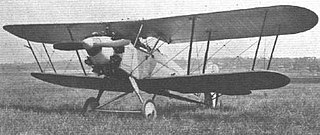 W
WThe Hawker Hoopoe was a British prototype naval fighter aircraft designed and built in 1927 by Hawker Aircraft.
 W
WThe Hawker Hornbill was the last Hawker military aircraft designed under the direction of W. G. Carter. The design was started in 1925 and the first flight took place in July 1925. The Hornbill did not achieve service in the Royal Air Force due to problems in its power plant and radiator. Only one aircraft was built.
 W
WThe Hawker Woodcock was a British single-seat fighter built by the Hawker Engineering Company as the first fighter to be produced by Hawker Engineering. It was used by the RAF as a night fighter in the 1920s.
 W
WThe Nieuport Nighthawk was a British fighter aircraft developed by the Nieuport & General Aircraft company for the Royal Air Force towards the end of the First World War. Although ordered into production before the aircraft first flew, it did not enter large scale service with the RAF owing to unreliable engines. Re-engined aircraft did see service in Greece, serving from 1923 to 1938.
 W
WThe Parnall Pipit was a single-engined, single-seat naval fighter designed to an Air Ministry specification in 1927. Two prototypes were built but both were destroyed by tail flutter.
 W
WThe Parnall Plover was a British single-seat naval fighter aircraft of the 1920s. Designed and built by George Parnall & Co. for use on Royal Navy aircraft carriers, it was ordered into small-scale production but after extensive evaluation, the Fairey Flycatcher was preferred for large-scale service.
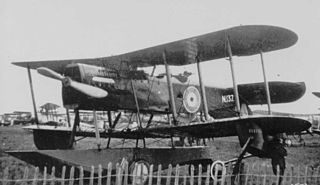 W
WThe Parnall Puffin was an experimental amphibious fighter-reconnaissance biplane produced in the United Kingdom just after World War I. It had several unusual features, principally a single central float and an inverted vertical stabilizer and rudder, and showed promise, but at that time no new aircraft were being ordered in numbers for the RAF and only the three Puffins of the initial order were built.
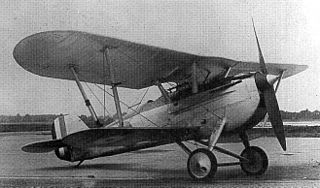 W
WThe Saunders A.10 was a private venture four-gun fighter. It was a single-seat, single-engined biplane with poor handling, later serving as a gun-testing aircraft.
 W
WThe Supermarine Sea King was a British amphibious biplane fighter designed and built by the Supermarine Aviation Works in 1920.
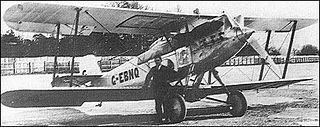 W
WThe Vickers Type 123 was a 1920s British single-seat biplane fighter designed and built by Vickers Limited as a private venture. The only Type 123 was later modified into the Type 141 but, not winning any orders, it was scrapped in 1930.
 W
WThe Vickers Type 143 or Bolivian Scout was a British single-seat fighter biplane designed and built by Vickers in 1929-1930. Six were built for Bolivia in 1930, which used the survivors in the Chaco War against Paraguay.
 W
WThe Vickers Vireo was an experimental low wing all-metal monoplane built to explore both all-metal service aircraft and the use of catapult launched ship board fighters. Only one was built.
 W
WThe Vickers Vixen was a British general-purpose biplane of the 1920s. Designed and developed by Vickers in a number of variants, with 18 Vixen Mark V sold to Chile. A prototype of a version with metal wings was built as the Vickers Vivid. The Vixen also formed the basis of the closely related Venture and Valparaiso aircraft, which were also built and sold in small numbers in the 1920s
 W
WThe Vickers Type 121 Wibault Scout was a British fighter built by Vickers in the 1920s. It was a licensed version of the French Wibault 7 aircraft, with 26 being sold to Chile in 1926, where they served until 1934.
 W
WThe Westland Interceptor was a fighter developed by the British company Westland Aircraft to Air Ministry Specification F.20/27. When tested in 1929 and 1930, it showed unsatisfactory handling characteristics and was rejected by the RAF in favour of the Hawker Fury biplane fighter.
 W
WThe Westland Westbury was a British twin-engined fighter prototype of 1926. Designed by Westland Aircraft it never entered service but played a useful role in the testing of the COW 37 mm gun. Only the two prototypes were completed.
 W
WThe Westland Wizard was Westland Aircraft's first attempt to produce a monoplane fighter. The project was privately funded and the prototype design was done in the spare time of the company's engineers. This all happened during 1926, with high-speed performance as the primary goal.